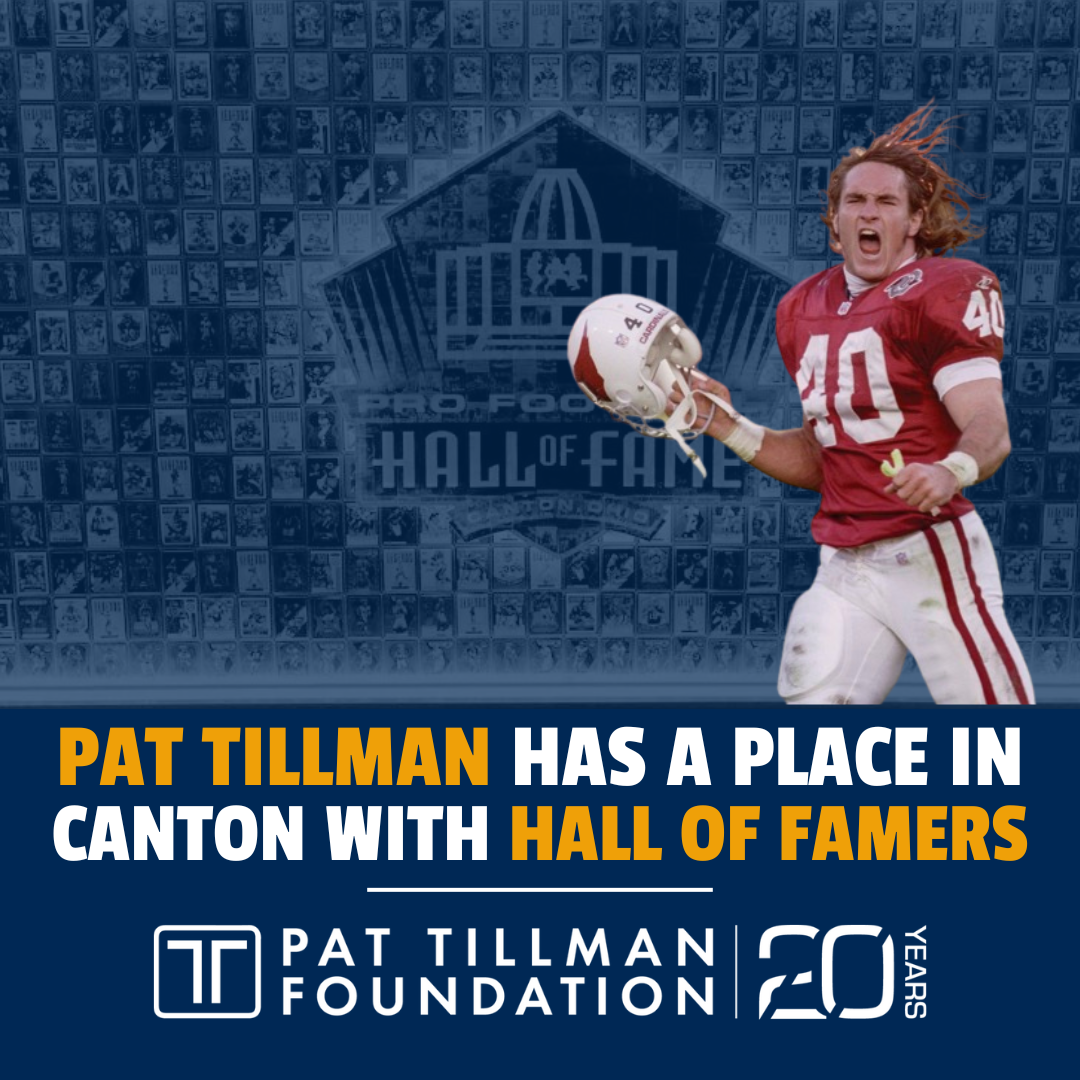Make Your Mark: How Jameson Lopez Fights Invisibility with Data
“And [my mom] said, ‘JD, you’re Native American. You’re Kwatsan.’ And my eyes lit up again, and almost as soon as she told me, I took my shirt off, I got her red lipstick, started painting my face and my chest, I cut up her hibiscus tree, and I started making bows and arrows, and hunting the alley cats in our backyard. I did everything that I saw, and what I thought it meant to be Native, you know, or at least the perception — but in reality, I realized that the visibility of Natives in the world was just so limited .”
Our Make Your Mark series, powered by the NFL, showcases the global impact of the Tillman Scholars who are writing the story of a better future. In these videos they share their works of humble leadership and service across both public and private sectors. This Make Your Mark Talk was originally presented at the 2018 Tillman Honors.
In his talk, Tillman Scholar Jameson Lopez discusses what it means to be visible and how data can provide insights that support Native Americans and other vulnerable communities in getting access to legal resources and education.
He shares his own experiences of finding individual, social and cultural identity, as well as how education brought his mother hope and changed the legacy of his family.
In a time when the nation is reflecting on inequity and representation, his perspective offers invaluable insight into practical steps we can take to get support to communities who have been marginalized and unheard.
Or as he says: “ …What I want for future generations is, with a certainty of numbers, that they can know that they could help change the legacies of their families…”
Watch his full talk and read the transcript below.
Kumathum.
I’m from the Kwatsan nation, Fort Yuma California. I was born at this magical place called the Phoenix Indian Medical Center — that’s a part of Indian Health Services. If you all thought the VA was bad, you haven’t been to Indian Health Services. But I’m Native American, maybe the first one some of you have seen outside of TV, maybe the first time you’ve heard one speak, but I didn’t always know I was Native. You see I was born and raised in a predominantly white neighborhood, where I was easily easily the darkest kid among everybody in that group, and given that I was the darkest kid I had ever seen in my entire life, when kids started asking about my identity at school, I responded in my eight-year-old naiveness, “Well, I’m Black.”
And my teacher overheard me, and she called my mom, and when I got home from school my mom, she she saw me, she said, “JD, sit down. I have something to tell you.” She said, “JD, you’re not Black.” And I got sad, because I had really enjoyed being African-American the first eight years of my life, but I looked to my mom, and I said, “Mom, well what am I?” and she said, “JD, you’re Native American. You’re Kwatsan.” And my eyes lit up again, and almost as soon as she told me, I took my shirt off, I got her red lipstick, started painting my face and my chest, I cut up her hibiscus tree, and I started making bows and arrows and hunting the alley cats in our backyard. I did everything that I saw and what I thought it meant to be Native, you know, or at least the perception, but in reality I realized that the visibility of Natives in the world was just so limited.
You know, the work I do is to bring visibility of the Native Americans through data. More specifically, I used quantitative data to tell our stories through a universal language of numbers. You see most of the information about us is limited to whatever scene in western movies as well as mascots. We see Natives have inhabited these lands for longer than the U.S. has been around, and currently, we represent about 2% of the U.S. population. But you see, to some visibility doesn’t matter, but when half of indigenous women experience domestic violence, when 96% of those perpetrators are non-Native and when 67% of sexual abuse cases are denied by the U.S. Attorney’s Office, then visibility matters.
You see when we want to pass policies but the data is not there, or there’s not a large enough sample to find statistical significance, then visibility matters.
When we constantly have these stereotypical images of us, but we just want people to recognize that we’re here, strong and resilient in the modern world, then visibility matters.
You know my work. It’s to help build a tribal capacity of many of our nations, and you know I do it through two different ways. The first part is collecting and analyzing data and the second part of that is helping tribes use that data to figure out ways to improve the rate of Native Americans going into higher education.
You see currently the rate of Native Americans going into higher education is quite low, compared to other groups. We have about 12 percent of Native Americans compared to 37 percent of white students complete at least a bachelor’s degree. So, as a researcher, one of the things that I’m really concerned with is how do we improve the rate of Native Americans going into higher education.
And one of the things that we have found is that culture can predict persistence, but what does that really mean? Like, what tangible things can we get from that? And so as a tribe we’ve worked together and thinking about ways that we could support our students culturally, and one of the things we’ve come up with is “Well, maybe we need to buy real estate near the universities that our students are more likely to attend.” You see in almost building a home away from home. Like, for example, right now we have seven of our students, they go to in-state university, we pay ten thousand dollars to a university that doesn’t necessarily support them per student; so that’s 70 grand a year. Why aren’t we using that capital to buy real estate where we could support our students?
We could give them the cultural support they need, they could be around other Natives, have the language, have the food, people that talk like them, smell like them; but really we’re also, moreover, building the economic development of our tribe, and we’re also helping these students build legacies for the families and communities. And when I talk about legacies, I can’t help but think about my own family. You see my mom, she’s 65 years old, and I hope she doesn’t mind I said that, but, you know, my mom she grew up in a one-bedroom mud house in the middle of the Sonoran Desert. Because of the boarding school era, her home was wracked with alcohol and abuse. Her father passed away of alcohol poisoning just outside their sandwich home beneath the mesquite tree when she was 12 years old. In that same year, a group of Native American college students came to our reservation with a message of hope through education. And they told my mom you could go to college. And my mom, at the age of 12, she believed them, and she effectively changed the legacy of our family. But the thing is, is there wasn’t data or anything to tell her story, and so what I want for future generations is with a certainty of numbers, that they can know that they could help change the legacies of their families, also. You see visibility, it matters. It matters to all 573 federally recognized tribes and even more state-recognized tribes. It matters to the Sinevoi, the Arapahos, Apache; to the Chemehuevi, to the Comanche, to the Cherokee, to the Hualapai, the Havasupai, and the Hopi, to the Mohawk, the Macaw, and the Muckleshoot, to the Kwatsan, to the Pawnee, to the Paiute, it matters to the Tohono O’odham, the Yaki and the Zuni. You see the data represents people, and those people—our people’s stories—need to be visible.
Thank you.




